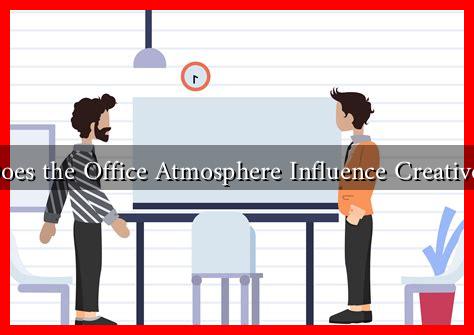-
Table of Contents
How Does the Office Atmosphere Influence Creative Work
The office atmosphere plays a crucial role in shaping the creative output of employees. From the layout of the workspace to the colors on the walls, every element can either foster innovation or stifle it. In this article, we will explore how various aspects of the office environment influence creative work, supported by research, examples, and case studies.
The Importance of Office Design
Office design encompasses everything from furniture arrangement to lighting and color schemes. A well-thought-out design can enhance creativity by promoting collaboration and reducing stress. According to a study by the University of Exeter, employees in well-designed offices are 15% more productive than those in poorly designed spaces.
Key Elements of Office Design
- Open Spaces: Open office layouts encourage collaboration and communication among team members. However, they can also lead to distractions. A balance between open spaces and quiet zones is essential.
- Natural Light: Exposure to natural light has been shown to improve mood and energy levels. A study published in the Journal of Environmental Psychology found that employees with access to natural light reported higher levels of creativity.
- Color Psychology: Colors can evoke different emotions and influence creativity. For instance, blue is often associated with calmness and focus, while yellow can stimulate creativity and optimism.
The Role of Social Interactions
Social interactions within the office can significantly impact creative work. A supportive atmosphere where employees feel comfortable sharing ideas can lead to innovative solutions and breakthroughs.
Building a Collaborative Culture
- Team-Building Activities: Regular team-building exercises can strengthen relationships and foster a sense of belonging, which is crucial for creative collaboration.
- Feedback Mechanisms: Establishing a culture of constructive feedback encourages employees to share their ideas without fear of criticism, leading to more innovative outcomes.
- Diversity of Thought: A diverse team brings different perspectives and experiences, which can enhance creativity. Companies like Google and Apple have thrived by promoting diversity in their workforce.
Impact of Noise Levels
Noise levels in the office can either enhance or hinder creativity. While some employees thrive in bustling environments, others may find it distracting. A study by the University of California found that moderate noise levels can enhance creative thinking, while excessive noise can be detrimental.
Strategies for Managing Noise
- Designated Quiet Zones: Creating areas where employees can work without distractions can help those who need silence to think creatively.
- Sound Masking: Implementing sound masking systems can help reduce the impact of background noise, allowing employees to focus better.
- Flexible Workspaces: Allowing employees to choose where they work based on their tasks can lead to increased productivity and creativity.
Case Studies: Companies That Get It Right
Several companies have successfully created office atmospheres that foster creativity. For example, the design firm IDEO is known for its innovative workspace that encourages collaboration and experimentation. Their open layout, combined with creative zones filled with art supplies and brainstorming tools, allows employees to think outside the box.
Another example is the tech giant Google, which has designed its offices to include recreational areas, nap pods, and open spaces that promote interaction. This approach has been linked to their high levels of employee satisfaction and creativity.
Conclusion
The office atmosphere is a critical factor in influencing creative work. By focusing on design, social interactions, noise management, and fostering a collaborative culture, organizations can create an environment that nurtures innovation. As companies continue to adapt to the changing landscape of work, understanding the impact of the office atmosphere on creativity will be essential for driving success.
In summary, a well-designed office that promotes collaboration, manages noise levels, and encourages social interactions can significantly enhance creative output. Companies that prioritize these elements are likely to see not only improved employee satisfaction but also increased innovation and productivity.
For further reading on the impact of office design on productivity, you can visit Harvard Business School.

